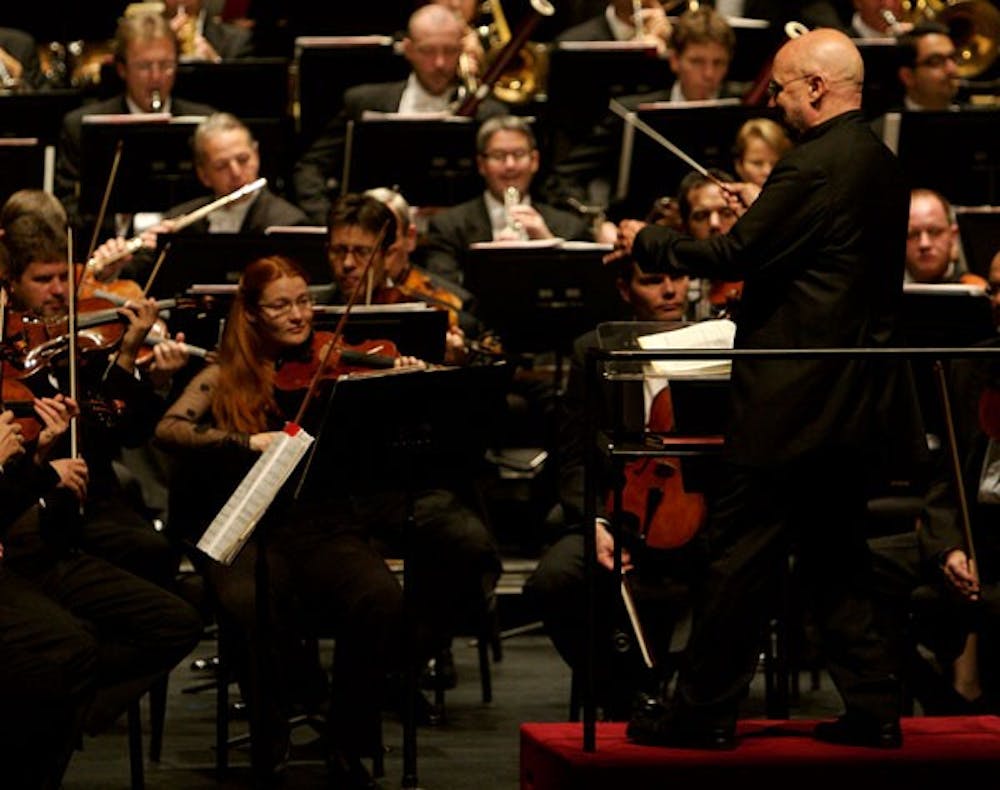Modern music is notoriously difficult to tackle.
Complicated rhythms, disjointed melodies and unusual tone qualities make much of the traditional classical music written in the last 50 years so nontraditional that many ensembles avoid it altogether when crafting concert programs.
But in a forceful declaration of modernity, the Bruckner Orchestra Linz presented a concert consisting entirely of more recent pieces — and, for the most part, they succeeded.
Under the direction of Dennis Russell Davies, the orchestra of the Austrian city of Linz played with shifting confidence, at times unified and strong, and in other places ever so slightly off.
Part of this hesitancy might have stemmed from the music chosen.
The three pieces, Leonard Bernstein’s triumphant “Symphonic Dances from ‘West Side Story’” and two weighty works by seminal modernist composer Philip Glass, were high on rhythm and short on melodic passages, making any kind of confusion within the orchestra immediately apparent.
The tight space provided to the ensemble on the Memorial Hall stage — it held three rows of choir bleachers and a complete orchestra formation — severely crowded the orchestra, narrowing their focus.
Issues of space or musical difficulty aside, the ensemble played with great skill, improving as each song and the evening itself continued on.
In Bernstein’s jazzy suite, the Bruckner orchestra seemed to gradually warm up, only truly coming into their own by the riotous mambo section in the middle.
The first Glass piece, a violin concerto featuring French soloist Renaud Capucon, also suffered from a sense of hesitancy. The swirling, repetitive piece — so typical of Glass’ work — only seemed to come together in the final, technically challenging movement.
In what was perhaps the evening’s finest — and most surprising — piece, the Bruckner orchestra joined with UNC’s Carolina Choir, offering an unusual and sweeping Glass symphony, the orchestra’s only performance of this piece on their current U.S. tour.
Each movement, propelled by the choir’s steady, syllabic chanting, rose in intensity and mastery.
The third movement, riddled with inexplicable and lengthy pauses following dramatic crescendos, suggested the difficulty of modern music. The piece ended on an unassuming and generally unremarkable downward passage, leaving the audience unsure on the appropriate time to clap.
It was modern music at its best.
Contact the Arts Editor at artsdesk@unc.edu.
Orchestra review: Bruckner Orchestra Linz

The Bruckner Orchestra Linz performs Symphonic Dances from West Side Story in Memorial Hall. DTH/Elizabeth Ladzinski



